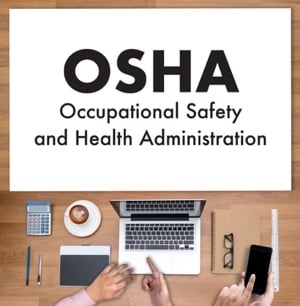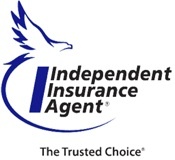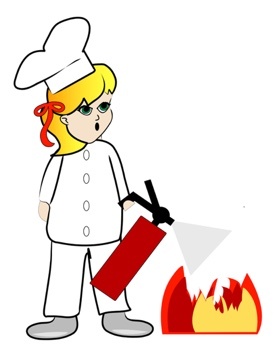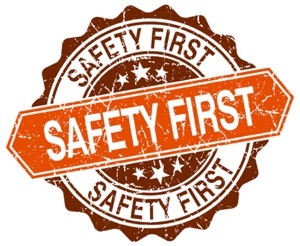 Every workers compensation insurance claim should be investigated because it’s imperative to making accurate and legal assessments related to primary liability.
Every workers compensation insurance claim should be investigated because it’s imperative to making accurate and legal assessments related to primary liability.
To do that, you need to know a bit about the law and about medicine to create an efficient workers compensation program.
Most business owners lack extensive knowledge of both medicine and the law, so here are 3 valuable tips to help you investigate Workers Compensation (WC) claims.
1 - First Report of Injury
This document is the beginning of any WC insurance claim investigation, and it serves as the basis for your insurance company’s investigation making it a critical document to any successful resolution of a WC claim.
The form you use may be issued by your state’s industrial commission or could be company-specific. Whichever type of form you’re using, the information on it needs to be accurate and complete. This is an instance when you do want to sweat the small stuff.
Before submitting this form, make sure it is completely filled out and that the information is correct. Check that the name of the injured employee is spelled correctly; that you have the correct social security number, date of injury, and wage info; and any potential witnesses are listed.
Make sure information about the injury is complete and accurate including when, where, and how the injury occurred, type of injury, the body part affected, and where the injured employee received medical care and treatment.
You should also know who completed the form and even a little background about that person. It’s a balancing act; you need to trust but at the same time verify that all the information is correct.
Often, the space allowed is not enough to provide thorough information, so don’t be afraid to write “see attached” if you need more room to describe the accident including alternate explanations of what did or didn’t occur.
2 - Recorded Statements from Injured Employee and Witnesses
First, make sure you understand the laws in your state regarding recorded statements and that you follow those guidelines. Then you want to obtain as much detail as possible. You should ask questions about:
- The claimant’s background information such as date of birth, education, work history, etc.
- The claimant’s prior medical history including surgical history, car accidents, chemical and substance abuse treatment, mental health, etc.
- Potential interveners such as public assistance, veterans' benefits, unemployment compensation and history, etc.
- Working environment at the time of the injury such as the claimant’s manager or supervisor, work duties, wage history, verbal and written reprimands, etc.
- Detailed information about the injury such as a description of injury, immediate injury symptoms, post-injury symptoms, etc.
To help avoid questions regarding the admissibility of the recordings, make sure that the employee reviews and signs a transcribed copy of the statement.
3 – WC Documentation
There are several documents available to you as you delve into a workers’ compensation claim investigation including the following:
- Medical records and authorizations to discover prior injuries or conditions.
- Industrial Commission records – Most states keep WC records on file with whatever state agency is responsible for overseeing the WC act. Although you will probably need to get authorization to obtain these records, they can contain a great deal of information about an employee’s prior medical history.
- Central Index Bureau Records (CIB) or ISO report - Although these reports may not be admissible, they can provide information about prior insurance-related claims made by the injured employee that can lead to other information that is admissible
A thorough Workers Compensation claim investigation takes time and effort but can save you thousands of dollars and reduce your insurance costs. Follow these 3 tips to make the process go more smoothly and lead to quicker and more successful Workers Comp claim resolutions.
Save Big on Workers Compensation Insurance!
 Workers comp insurance can be more affordable than you think!
Workers comp insurance can be more affordable than you think!
To learn how you can save big on Workers Compensation Insurance, give the independent experts American Insuring Group a call at (800) 947-1270 or (610) 775-3848 or contact us online.



 The Occupational Safety and Health Act (OSHA) has a lot of rules and regulations for business owners, and sometimes, those rules and regulations seem like nothing but a nuisance. However, not complying with them, can result in hefty fines.
The Occupational Safety and Health Act (OSHA) has a lot of rules and regulations for business owners, and sometimes, those rules and regulations seem like nothing but a nuisance. However, not complying with them, can result in hefty fines. To learn how your business can save on workers compensation and all other commercial insurance costs, call our experienced independent agents at American Insuring Group at
To learn how your business can save on workers compensation and all other commercial insurance costs, call our experienced independent agents at American Insuring Group at  Any good Workers Compensation Insurance (WC) program includes a strategy to ensure quick reporting of injuries and WC claims.
Any good Workers Compensation Insurance (WC) program includes a strategy to ensure quick reporting of injuries and WC claims.  The agents at American Insuring Group can help you set up a Workers Compensation plan that promotes quick reporting of injuries, which can lead to more successful resolution of WC claims. PLUS, we can help you save a bundle on great insurance!
The agents at American Insuring Group can help you set up a Workers Compensation plan that promotes quick reporting of injuries, which can lead to more successful resolution of WC claims. PLUS, we can help you save a bundle on great insurance! The majority of injured workers are back on the job within four days.
The majority of injured workers are back on the job within four days. American Insuring Group specializes in Workers Compensation Insurance and we can save you a bundle. We shop and compare so you don't have to, and we're really good at it!
American Insuring Group specializes in Workers Compensation Insurance and we can save you a bundle. We shop and compare so you don't have to, and we're really good at it! This is the first in a series of four blogs that will focus on what
This is the first in a series of four blogs that will focus on what  Creating safer work sites is just one way to
Creating safer work sites is just one way to  Wouldn’t it be great to this the year you decrease your Workers Compensation insurance costs? Now is the perfect time to tune up your WC program to experience cost-savings.
Wouldn’t it be great to this the year you decrease your Workers Compensation insurance costs? Now is the perfect time to tune up your WC program to experience cost-savings. This is a great time to review your WC policy for potential opportunities to save while getting better coverage. American Insuring Group specializes in Workers Compensation Insurance and will help you get the right insurance at a great price.
This is a great time to review your WC policy for potential opportunities to save while getting better coverage. American Insuring Group specializes in Workers Compensation Insurance and will help you get the right insurance at a great price. We’re sure it comes as no surprise that
We’re sure it comes as no surprise that  it’s a mixed bag.
it’s a mixed bag. We talk a lot about safety on this blog, but the truth is that reducing and preventing the number of injuries in the workplace, is one of the best ways to
We talk a lot about safety on this blog, but the truth is that reducing and preventing the number of injuries in the workplace, is one of the best ways to In 1996, Pennsylvania’s Workers’ Compensation Act was amended, and Act 57 was passed.
In 1996, Pennsylvania’s Workers’ Compensation Act was amended, and Act 57 was passed. To learn more about all your
To learn more about all your 



